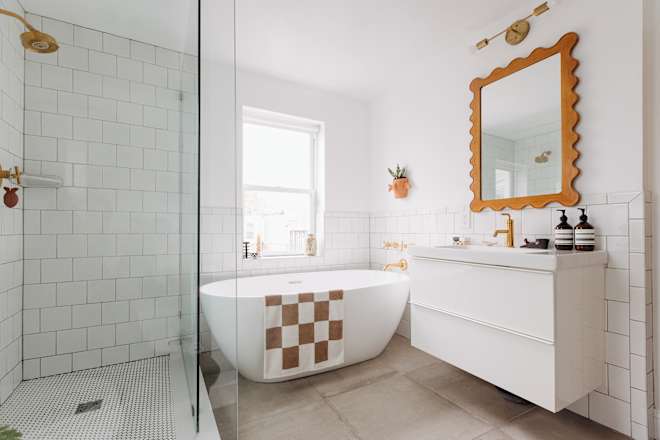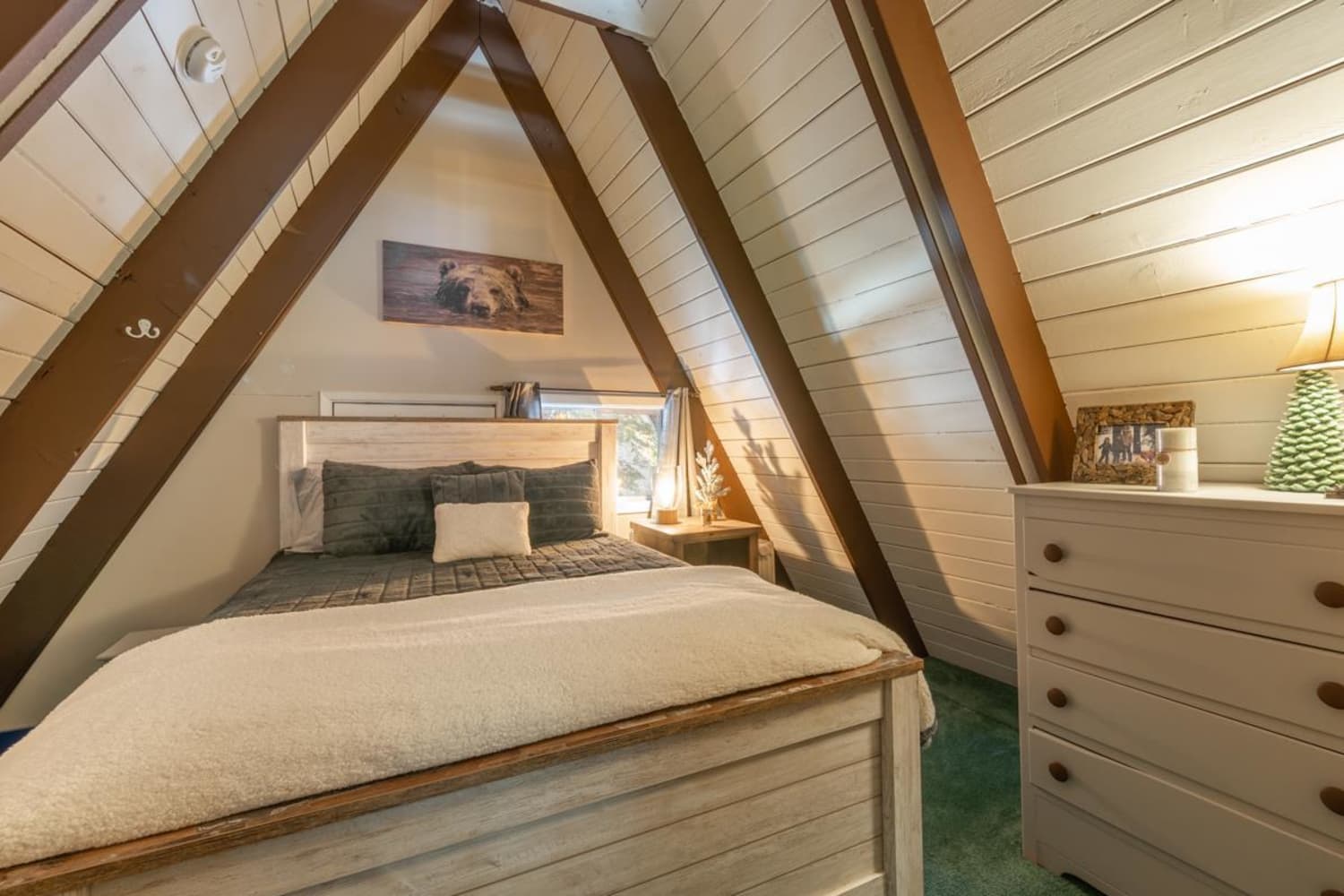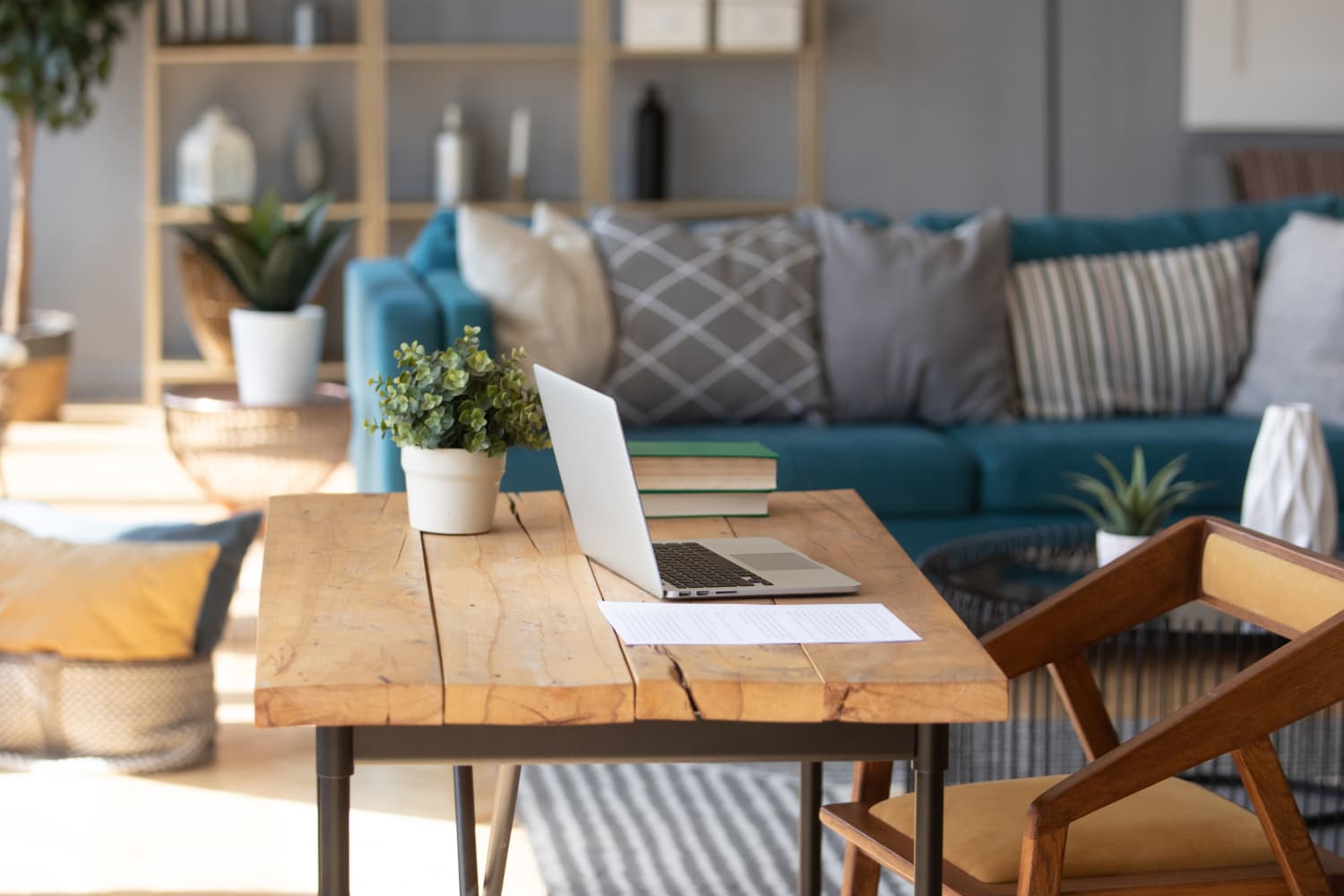
Bathtubs Are Being Replaced with Something Far More Practical
I love its replacement.
READ MORE…

I love its replacement.
READ MORE…

It’s so nice-looking (and smells good, to boot!).
READ MORE…


They may have left the White House, but Barack and Michelle Obama are still living large. The couple has amassed an impressive real estate portfolio (though maybe not as impressive as Taylor Swift’s) in the eight years since they moved from 1600 Pennsylvania Avenue, including properties in Washington, D.C., Hawaii, and Martha’s Vineyard.
The Obamas are known for their classic style, and their White House decor was no exception. Both the public and private quarters were homey and welcoming during their tenure, with a smattering of contemporary art — a break from the stuffier aesthetic choices of past residents.
Their current homes showcase the same classic style with a nod to the modern designs that have come to represent the former First Family. The couple currently owns three properties, but a fourth may be in the works.
The Obamas have been hard at work building their Waimānalo, O’ahu beachfront property for the last 10 years, KHON2 recently reported. Rumors have been swirling for years that the property, which the couple originally purchased for $8.4 million under their LLC, is nearing completion and that the Obamas may spend more time there in the future.
The property is expansive — it’s actually three separate homes on three acres of beachfront land — and features 11 bedrooms and 14 bathrooms. And though in Hawaii, having private beachfront property is patently illegal due to cultural and historical reasons for Native Hawaiians, the Obamas will have private beachfront access for security reasons.
The neighborhood caters to Washington’s movers and shakers, with homes belonging to Jeff Bezos as well as Jared Kushner and First Daughter Ivanka Trump in the first Trump presidency. According to reporting by Curbed D.C., the 8,200-square-foot home, which boasts eight bedrooms and nine-and-a-half-baths, was previously owned by Bill Clinton’s press secretary Joe Lockhart.
Once the purchase was complete, the Obamas got to work adding an in-ground pool to the grounds. The beautiful brick home, built in 1920, underwent an extensive reno and expansion in 2011, and some security modifications were made in 2017 — namely, a brick wall around the property. They also converted the garage into an office, but don’t worry if you’re planning to visit; the gated courtyard has parking for 10.
In 2019, the Obamas, through a proxy, inked a deal on a gorgeous 6,892-square-foot house on the prestigious island of Martha’s Vineyard in Massachusetts. The home, which boasts seven bedrooms and eight-and-a-half baths, sits on a secluded 29.3-acre coastal estate with manicured grounds leading to the water and amazing ocean views.
The family enjoys a posh swimming pool, deck, and boathouse, along with a chef’s kitchen, formal dining room, elegant master suite, and a living room with vaulted ceilings and a custom stone fireplace.
The Obamas were not strangers to the Vineyard when they chose to buy there — they vacationed on the island seven out of the eight years Barack was in office, enjoying time at the exclusive Blue Heron Farm in Chilmark Pond, which sold for $15 million in 2018.
The Obamas still own the Chicago home they bought after Barack was first elected to the U.S. Senate back in 2004. The stunning redbrick Georgian home has six bedrooms and six baths and was home to the young family from 2005 to 2008, when they moved into the White House. They originally purchased the home for $1.65 million.
The home is located on the street in the Kenwood/Hyde Park neighborhood, although the street is blocked off to deter tourists — and vandals — from loitering. Fittingly, in the late 1960s and early 1970s, the mansion was a “hub of social activism” owned by Lutheran Urban Ministries, according to reporting from Huff Post.
While Sasha and Malia may have lived with their parents during the presidency and after it, they’re both well into adulthood now — Sasha is 24 and Malia is 27. The sisters currently live together in an apartment in Los Angeles, according to People.


Living in the right tiny home can make you feel like you’re checking into a luxe rental just by stepping out of your backdoor — or it can even function as a little Airbnb in your dream destination. Case in point: A stunning A-frame tiny house on Amazon that looks like a Northern California getaway.
Amazon is now selling the Luxury A-Frame Triangle House starting at $9,869 (prices vary depending on your customization), which promises to make you feel like you’re hunkered down in a cozy forest retreat. However, instead of shelling out hundreds of dollars to rent a cabin with this rustic silhouette, you could feasibly set up the scenic hideaway in your own backyard (as long as it’s big enough) — or even build this tiny unit as a personal cabin or rental in your favorite nature location.
The tiny home is really tiny, according to the listing, which we can’t verify at this time — just 20 feet in length, 17.5 feet in width, and 8 feet in height. Renderings of the tiny home in the product listing appear to show that there should be space for a first floor and second floor space, just keep in mind that the unit doesn’t appear to come with all the kitchen and bathroom appliances, plumbing capabilities, electric wiring, and foundation that you’d need to comfortably live in the space full-time. It also doesn’t say whether the wall of windows is included with the building kit. Make sure to budget all of that into the final cost of the home, as well as any contractors needed to bring your dream to life and potential permits needed for your location.
On the bright side, this allows you to tailor the home to best suit your needs, with the option to create bespoke windows, flooring, and roofing, as well as a terrace add-on. You can also switch up the number of rooms as well as their layout, depending on whether you plan to use this tiny dwelling as a guesthouse, a studio, or even a full-time apartment.
In addition to its modern, yet rustic appearance, this stylish tiny home is built to last — the listing states that the home comes with your choice of weather-resistant steel or timber frames, water-resistant panels on the outside, and heat-insulated panels on the walls.
Just keep in mind that the photos on Amazon’s house are more inspirational renderings than reality, and you’ll have to work with the company to come up with a final mockup and layout for your new tiny cabin getaway. But it’s a gorgeous design — and it’s fun to fantasize.
Buy: Luxury A-Frame Triangle House, $9,869


If your company asks you to temporarily relocate to a new branch in another state or collaborate with international coworkers on a long-term project, they may offer to help find you a place to live in that location.
Though they may simply book you a hotel room, your employer may also set you up with an accommodation known as corporate housing, which is a furnished, short-term rental that’s designed to feel more like a home away from home.
For more content like this follow
“In some instances, corporate housing is given when an employee is expected to consistently travel to a place for work, yet they are still maintaining a residence in their home jurisdiction,” explains real estate agent Monisha Rana. “All in all, companies offering corporate housing are more likely to get their employees to relocate, either temporarily or permanently, as it causes the least disruption to their personal lives.”
Corporate housing is a private, temporary living setup in an apartment, home, or even an extended-stay hotel. It typically offers more space than a standard hotel room and may include additional living areas, such as a kitchen and dining area.
Corporate housing units are almost always furnished and equipped with all the utensils, linens, gadgets, and other fixtures you need to live comfortably for several weeks or months at a time.
Companies often lean on corporate housing when sending their employees to a new location for a long-term work project or a permanent relocation. But individuals can also book corporate housing themselves, such as when they’re moving to a new city and want to get to know different neighborhoods first before buying a house or signing a longer-term lease.
“Corporate housing is primarily for employees of firms that need to work in a different location for a short amount of time or as an intermediary step to relocation,” says Marie Bromberg, a real estate agent in New York City. “It’s a cost-effective way for a company to provide temporary housing.”
The cost of corporate housing depends on the location: Units in high-demand areas tend to be more expensive, whereas those in more rural or low-traffic areas may be more affordable. Overall, corporate housing options tend to be more affordable than hotels.
In addition, if your company is sending you to a different location for a work project, they’ll typically pay for your accommodations while you’re there. If you’re self-employed or staying in corporate housing for personal reasons, however, you’ll probably be footing the bill yourself.
Either way, it pays to check around and compare prices to know which accommodation makes the most sense from a budget perspective.
Compared to a hotel, corporate housing can be more comfortable—there’s generally more room to spread out, a kitchen to prepare meals in, and a separate living area to watch TV. You can also add personal touches to the space if you want, since you may be staying for a long time.
“Corporate housing allows employees to create a home environment away from their actual home while on assignment in a different city,” says real estate broker Mihal Gartenberg. “Rather than checking in and out of a hotel, employees can actually move in and add little flourishes to the apartment that can make it homier and less sterile than a hotel.”
For companies, corporate housing can be a positive perk to offer employees who may not otherwise choose to work so far from home. In the broader sense, it can also help businesses achieve their goals.
“Employers can allow for cross-collaboration across different sections and even countries of their company,” says Bromberg. “It allows intellectual exchange of ideas that often act as a draw for people considering the company as an employer.”
While there are lots of different hotels to choose from, you may be more limited when it comes to the selection of available corporate housing options. In addition, corporate housing may not be located in your preferred area and you may have to commute to work each day.
“Depending on the circumstance, it might not be in the center of the city,” says Bromberg. “For example, in New York City, we often see corporate housing in Jersey City.”
Another unavoidable downside is that, no matter how cozy you make your corporate housing feel, you’re still not in your own home. And if you opt to bounce back and forth between your house and your corporate housing accommodation, you may eventually experience some amount of “travel fatigue,” says Gartenberg.
“Such setups usually include weekend travel home and people ultimately want to stay home,” says Gartenberg. “The back and forth can be wearisome once the novelty of a new city wears off.”